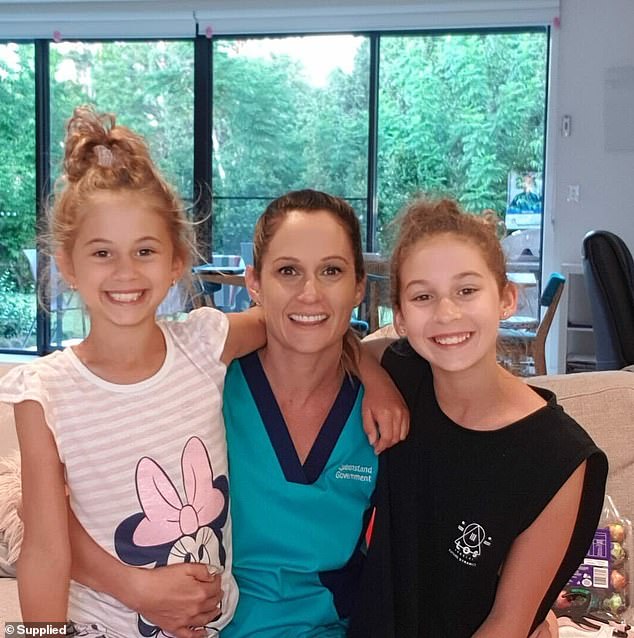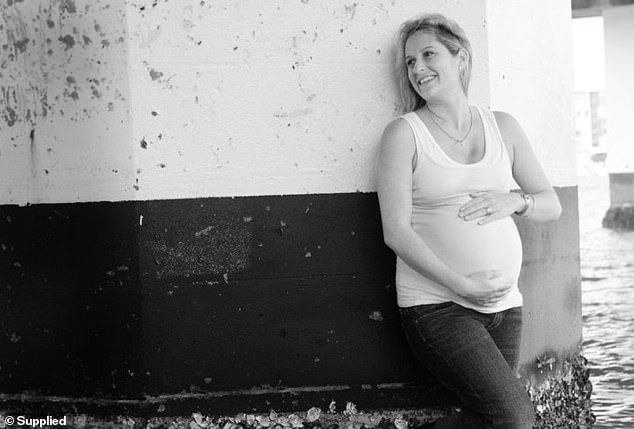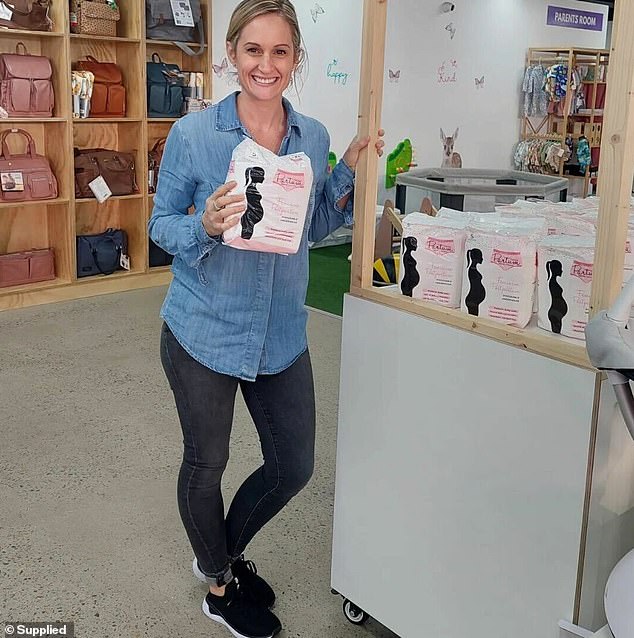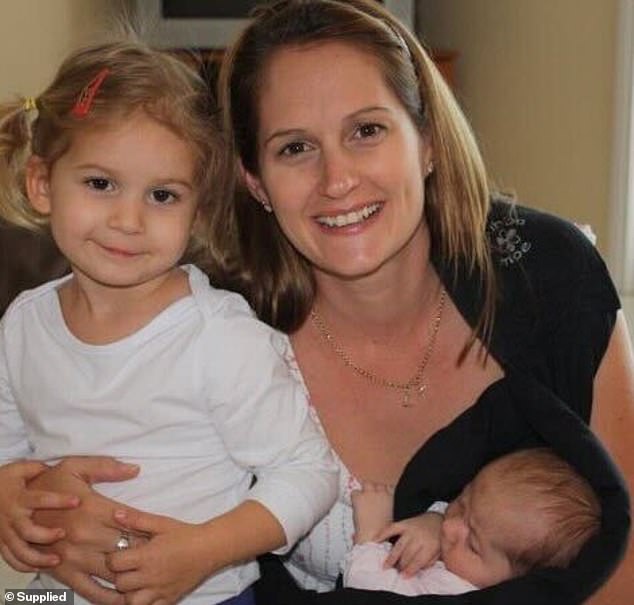I trusted doctors that everything would be fine when I gave birth to my daughter. The trauma that followed changed me forever – and now I’m helping others
Before Lydia Connolly gave birth to her first child in 2008, she “trusted the system.”
But it ended up being the most traumatic experience of her life.
What she thought would be an “easy” vaginal delivery turned into a harrowing emergency c-section.
This was followed by an unsettling hour-long separation from her infant daughter, which affected her greatly — something new mothers no longer have to put up with.
Speaking to FEMAIL, Lydia, 43, explained that it “took her a long time to get over the ordeal” and that she changed the course of her life.
“I was so overwhelmed and had little support. I remember being shocked,” said the Queensland mother.
Lydia’s first birth was extremely traumatic, then her baby was taken from her. After feeling like a failure, her second birth (pictured here) was a healing experience
“I desperately asked not to have a C-section, I wanted more time. But then I was told that if I gave birth vaginally, I would never have children again,” she said.
Lydia felt like her body had failed her. As if she had failed.
She developed postpartum anxiety and had severe sleep problems for three years.
While healing mentally and physically, she decided to change careers and study midwifery so she could help other women have a more positive experience than her.
Lydia said the three-year age gap between her daughters was longer than planned as she had to deal with the anxiety left over from the first time.
“The second time was such a healing experience. I could advocate having my baby with me all the time, and even though I had a C-section, I was much more prepared for it,” she said.

Lydia changed careers after her first birth: she became a midwife to help other mothers
‘I was highly educated. And I really think it’s important for moms to know their rights and their plan — and backup plan. Because when something unexpected happens, it takes much longer to heal.’
Now Lydia’s career has taken a new turn.
As a midwife and mother of two, she discovered that there were some pretty serious gaps in the market for new moms.
Namely, disposable panties to help with the weeks of intense bleeding after birth, however the baby comes.
“I had a C-section and a lot of people think that means you don’t bleed, which isn’t true. I was bleeding profusely,” she said.
The products available on the market 15 years ago left little room for comfort or dignity, and they hadn’t improved much by the time Lydia qualified as a midwife.
“Women used to be okay with wearing big underpants with a giant chamois,” she said.
“But the electrodes can be painful and ineffective, sticking to women’s wounds as they heal.”

She advises every woman to read up on birth and make some birth plans just in case the first one doesn’t work out.
Enter Partum Panties: Disposable panties designed to fit a woman’s body after giving birth, supporting their waistline while also absorbing the massive amount of blood and discharge.
“They are designed to absorb blood, not just urine,” Lydia explained.
“Other disposable panties on the market aren’t made for that and made with an older person in mind, so were tight at the top to keep everything in.”
The underwear Lydia designed is also easy to remove – something many moms who experience postpartum pain know is important.
Lydia spent six months developing the product through Covid before having new mothers tested the following year.

Partum Panties – the first of their kind on the market – were an instant success
“We didn’t want it to be another itchy white adult diaper. I wanted women to feel dignified and not have to worry about leaking every time they had to get up to go to the bathroom.”
The product was modified after feedback from the women who had tried it, and was eventually released with immediate success.
“We did get some backlash from companies when we asked them to stock them. But it’s fun to prove them wrong,” Lydia said.
Since its official launch in August 2020, Lydia has sold over 60,000 packs in Australia and New Zealand.

Lydia is pictured with her two daughters. She said she postponed the birth of her second child after the trauma of the first birth
‘We can’t keep up with the orders from New Zealand and things are going very well at home as well. I’m lucky to have the support of many midwives who recommend them to women in the hospital,” she said.
Lydia now works full time for her company.
‘I’m still registered as a midwife; I’m just not doing that job right now,” she added.
Lydia has expanded her range of items with a Peri bottle to ease tears in the vagina, and straps to give mothers more support.
The traumatic birth story of the mother of two changed her life.
She said if she could go back in time she would learn more before going to the hospital the first time.
“It’s just not worth sticking your head in the sand and waving it around,” she said.
She also recommends that women opt for births through a midwifery program or, if they can afford it, hire a doula to advocate on their behalf.
“The most important thing is that you don’t just assume that your healthcare provider knows everything; not everyone complies with the policy guidelines. Think about what you need in your situation.’
“My birth trauma confused me for a few years. It took me a long time to feel normal again.’
Lydia also recommends getting physically fit enough to give birth, noting that it’s like running a marathon.
She recommends that new moms plan meals in advance even after giving birth.
